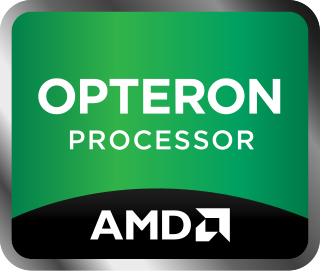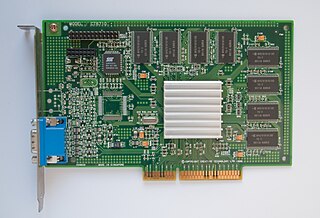This article needs additional citations for verification .(September 2022) |
S3 Graphics Chrome 500 series is the successor of S3 Graphics Chrome S20 series, and is produced in parallel to the S3 Graphics Chrome 400.
This article needs additional citations for verification .(September 2022) |
S3 Graphics Chrome 500 series is the successor of S3 Graphics Chrome S20 series, and is produced in parallel to the S3 Graphics Chrome 400.
The 530 GT is sold from S3's store for a price of $54.95 USD. No other online stores are known to carry this model and it is out of stock as of November 6, 2009. The 540GTX is sold from S3's Gstore for $69.95. It is similarly out of stock although a low profile version has been produced by Aopen Japan and is still on sale as of November 6, 2009.
The production model is with a 65 nm process, supports DirectX 10.1, OpenGL 3.0, and uses the PCI Express 2.0 interface. Chromotion engine now supports Variable length decoding, and dual-stream Blu-ray playback. Display unit includes 2 dual-link DVI transmitters with integrated HDMI (audio passthrough) and HDCP, an integrated dual channel LVDS transmitter, an integrated TV/HDTV encoder, and support for two analog CRTs. 530 GT runs at 625 MHz core speed, and has 512 MB of 500 MHz GDDR2 memory on a 64 bit bus. The 540GTX added a DisplayPort in the full height version as well as increased clock and memory speeds of 800Mhz and 850Mhz GDDR3 respectively.
From Linux driver version 14.02.10 on, S3 Chrome 500 video cards support VDPAU.
The 500 MHz GDDR2 memory clock, combined with the cards 64 bit memory bus, gives it a total memory bandwidth of 8 GB/s, on par with budget cards from Nvidia and AMD. Performance information released by S3 indicates the cards performance in 3dMark 2006 is comparable to an AMD HD4350.

A graphics card is a computer expansion card that generates a feed of graphics output to a display device such as a monitor. Graphics cards are sometimes called discrete or dedicated graphics cards to emphasize their distinction to an integrated graphics processor on the motherboard or the central processing unit (CPU). A graphics processing unit (GPU) that performs the necessary computations is the main component in a graphics card, but the acronym "GPU" is sometimes also used to erroneously refer to the graphics card as a whole.

Opteron is AMD's x86 former server and workstation processor line, and was the first processor which supported the AMD64 instruction set architecture. It was released on April 22, 2003, with the SledgeHammer core (K8) and was intended to compete in the server and workstation markets, particularly in the same segment as the Intel Xeon processor. Processors based on the AMD K10 microarchitecture were announced on September 10, 2007, featuring a new quad-core configuration. The last released Opteron CPUs are the Piledriver-based Opteron 4300 and 6300 series processors, codenamed "Seoul" and "Abu Dhabi" respectively.

The RIVA TNT, codenamed NV4, is a 2D, video, and 3D graphics accelerator chip for PCs that was developed by Nvidia and released in March 1998. It cemented Nvidia's reputation as a worthy rival within the developing consumer 3D graphics adapter industry. It succeeded the RIVA 128.

The RIVA TNT2 is a graphics processing unit manufactured by Nvidia starting in early 1999. The chip is codenamed "NV5" because it is the 5th graphics chip design by Nvidia, succeeding the RIVA TNT (NV4). RIVA is an acronym for Real-time Interactive Video and Animation accelerator. The "TNT" suffix refers to the chip's ability to work on two texels at once. Nvidia removed RIVA from the name later in the chip's lifetime.

The GeForce 6 series is the sixth generation of Nvidia's GeForce line of graphics processing units. Launched on April 14, 2004, the GeForce 6 family introduced PureVideo post-processing for video, SLI technology, and Shader Model 3.0 support.

The S3 ViRGE (Video and Rendering Graphics Engine) graphics chipset was one of the first 2D/3D accelerators designed for the mass market.

Savage was a product-line of PC graphics chipsets designed by S3.

The GeForce 7 series is the seventh generation of Nvidia's GeForce line of graphics processing units. This was the last series available on AGP cards.

The R300 GPU, introduced in August 2002 and developed by ATI Technologies, is its third generation of GPU used in Radeon graphics cards. This GPU features 3D acceleration based upon Direct3D 9.0 and OpenGL 2.0, a major improvement in features and performance compared to the preceding R200 design. R300 was the first fully Direct3D 9-capable consumer graphics chip. The processors also include 2D GUI acceleration, video acceleration, and multiple display outputs.

The Radeon R100 is the first generation of Radeon graphics chips from ATI Technologies. The line features 3D acceleration based upon Direct3D 7.0 and OpenGL 1.3, and all but the entry-level versions offloading host geometry calculations to a hardware transform and lighting (T&L) engine, a major improvement in features and performance compared to the preceding Rage design. The processors also include 2D GUI acceleration, video acceleration, and multiple display outputs. "R100" refers to the development codename of the initially released GPU of the generation. It is the basis for a variety of other succeeding products.

The ATI Rage is a series of graphics chipsets developed by ATI Technologies offering graphical user interface (GUI) 2D acceleration, video acceleration, and 3D acceleration developed by ATI Technologies. It is the successor to the ATI Mach series of 2D accelerators.

The GeForce 8 series is the eighth generation of Nvidia's GeForce line of graphics processing units. The third major GPU architecture developed by Nvidia, Tesla represents the company's first unified shader architecture.
S3 Graphics' Chrome series of graphics accelerators arrived in 2004 with the DeltaChrome line of chips. They were supplied as discrete, mobile, or integrated graphics.
Chrome 20 Series is a graphics accelerator by S3 Graphics, the successor of GammaChrome S18.

The GeForce 9 series is the ninth generation of Nvidia's GeForce line of graphics processing units, the first of which was released on February 21, 2008. The products are based on an updated Tesla microarchitecture, adding PCI Express 2.0 support, improved color and z-compression, and built on a 65 nm process, later using 55 nm process to reduce power consumption and die size.
S3 Graphics Chrome 400 is a computer graphics chip made by VIA. It was the successor of S3 Chrome S20 series.

The Northern Islands series is a family of GPUs developed by Advanced Micro Devices (AMD) forming part of its Radeon-brand, based on the 40 nm process. Some models are based on TeraScale 2 (VLIW5), some on the new TeraScale 3 (VLIW4) introduced with them.
The graphics processing unit (GPU) codenamed Radeon R600 is the foundation of the Radeon HD 2000 series and the FireGL 2007 series video cards developed by ATI Technologies. The HD 2000 cards competed with nVidia's GeForce 8 series.

The R300 GPU, introduced in August 2002 and developed by ATI Technologies, is its third generation of GPU used in Radeon graphics cards. This GPU features 3D acceleration based upon Direct3D 9.0 and OpenGL 2.0, a major improvement in features and performance compared to the preceding R200 design. R300 was the first fully Direct3D 9-capable consumer graphics chip. The processors also include 2D GUI acceleration, video acceleration, and multiple display outputs.